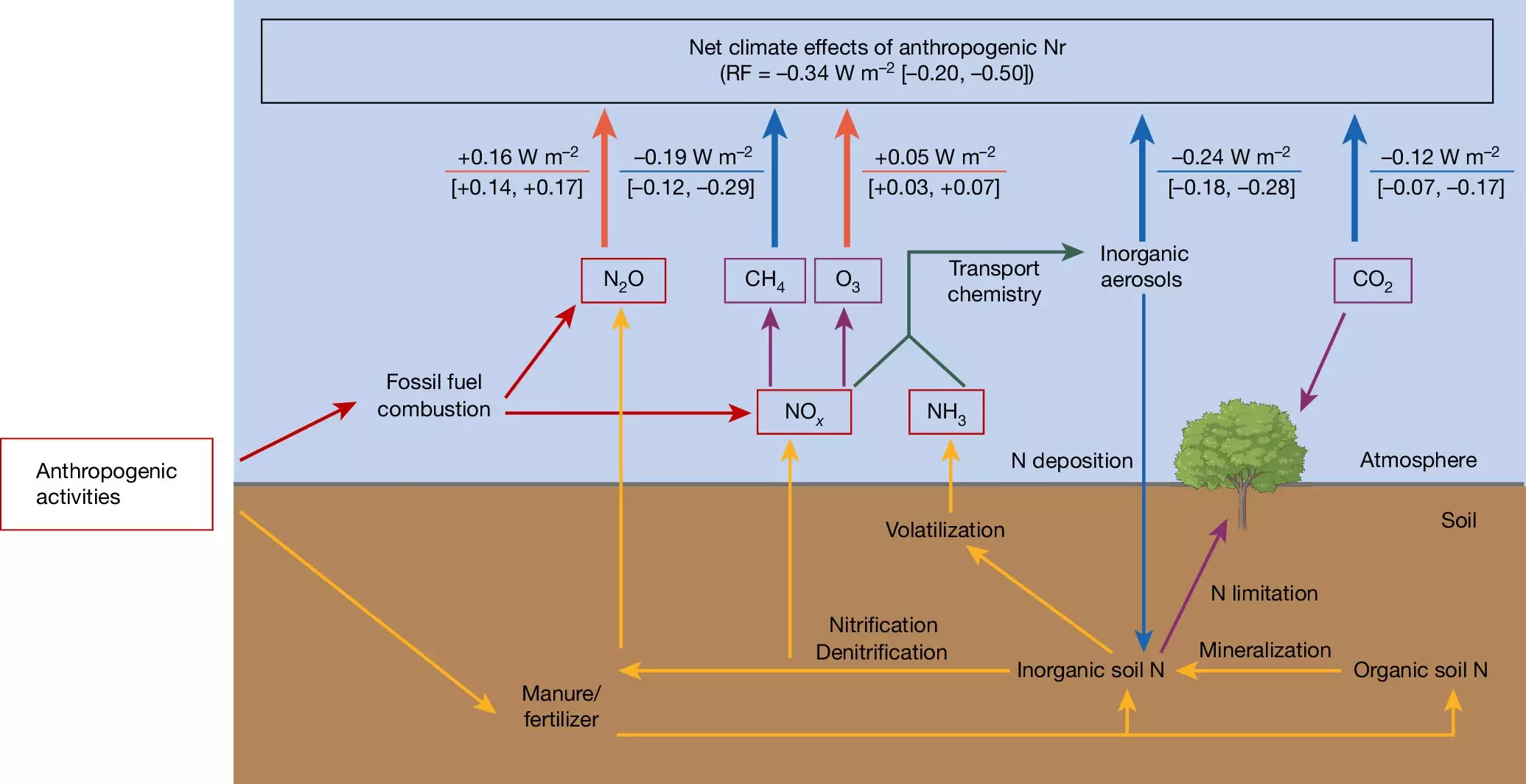In the realm of climate change discussions, nitrogen seems like a double-edged sword, heavily influencing our environment while simultaneously offering surprising benefits. Research led by the Max Planck Institute for Biogeochemistry in Jena dissected how nitrogen-based fertilizers and emissions from fossil fuels notoriously wreak havoc on ecosystems, yet they also introduce a cooling effect, illustrating the complexity of nitrogen’s role in our climate narrative.
Nitrogen exists in multitudes of forms—ranging from inert to reactive compounds—each contributing to various facets of environmental health. Understanding its true impact requires navigating the myriad pathways by which these compounds interact with our atmosphere and climate systems.
Climate Neutrality of Elemental Nitrogen
At its core, elemental nitrogen (the predominant component of the Earth’s atmosphere at 78%) is climate neutral. It neither warms nor cools the planet, allowing it to serve as a baseline against which other nitrogen forms can be evaluated. Conversely, the reactive nitrogen species, which include nitrous oxide—fabled for its potent greenhouse gas properties—and nitrogen oxides, emerge as culprits in changing climate dynamics.
Nitrous oxide, with a warming potential nearly 300 times that of carbon dioxide, overclouds the benefits typically associated with fertilizers. Its persistence in the atmosphere introduces complexities that necessitate careful consideration. Yet, nitrogen oxides, including those generated through burning fossil fuels, pack a cooling punch by fostering conditions that block sunlight from reaching the Earth’s surface. This elaborate interplay underscores a paradigm where seemingly adverse outcomes—like climate change—also contain elements that counterbalance them.
The Paradox of Over-Fertilization
While enhanced nitrogen levels in soils can spur plant growth and subsequently enhance carbon dioxide absorption—a cooling benefit—the dual consequence lies in the over-fertilization that leads to various environmental maladies. Water bodies suffer from nutrient runoff, creating dead zones that threaten marine biodiversity. Additionally, the release of ammonia and other nitrogen compounds complicated by industrial agriculture practices exemplifies how we are sowing the seeds of our own ecological unraveling.
What remains troubling is that the nitrogen input intended to mitigate warming effects also catalyzes deteriorating environmental health. Even with evidence showcasing a net cooling effect attributed to human-driven nitrogen inputs of approximately -0.34 watts per square meter, the broader ecological and health ramifications cannot be overshadowed.
The Complexity in Climate Modeling
In their analytical study published in *Nature*, the researchers employed sophisticated models to quantify and forecast the interactions of nitrogen compounds within climate systems. They identified an area of significant concern: prior estimates lacked the nuanced understanding necessary to depict the multifaceted global nitrogen cycle’s realities.
Current research champions holistic approaches that integrate atmospheric chemistry, biogeochemical cycles, and climate implications to create a more comprehensive understanding. This is particularly important as it reflects a move away from isolated data points and addresses systemic ecological challenges.
Especially critical is the dichotomy evident in lower emissions of greenhouse gases like CO2 and methane when contemplating the impacts of human activities on the nitrogen cycle. The climate community struggles with responding to these complexities, often leaning towards simplistic solutions that overlook intricate interdependencies.
Paving the Way for Sustainable Solutions
Despite the potential cooling effects attributed to human-generated nitrogen inputs, ongoing research and the voices of scientists like Sönke Zaehle and Cheng Gong accentuate one key takeaway: nitrogen emissions must be diligently curtailed. Charger agricultural practices could allow us to efficiently utilize nitrogen, mitigating the adverse effects of nitrous oxide emissions while still fostering crop growth that sequesters carbon.
These entangled effects force a recognition that although some aspects of nitrogen seem beneficial in the face of growing global temperatures, the overarching repercussions on human health, biodiversity, and the ozone layer must dictate a more responsible use of nitrogen.
The research sheds light on the importance of reducing both reactive nitrogen inputs and conventional greenhouse gases. As scientists draw attention to the clashing narratives surrounding nitrogen’s environmental impact, it becomes imperative for stakeholders and policymakers to advocate for practices that minimize emissions across the board, ultimately steering us toward a healthier planet that isn’t defined solely by its nitrogen narrative.
By delving deeper into the complex roles that nitrogen plays in our climate system, we can better understand how to approach mitigation strategies thoughtfully. The journey ahead is fraught with challenges, yet providing support for sustainable agricultural practices, comprehensive policy frameworks, and rigorous scientific inquiry can illuminate more effective pathways in navigating the climate crises.


Leave a Reply